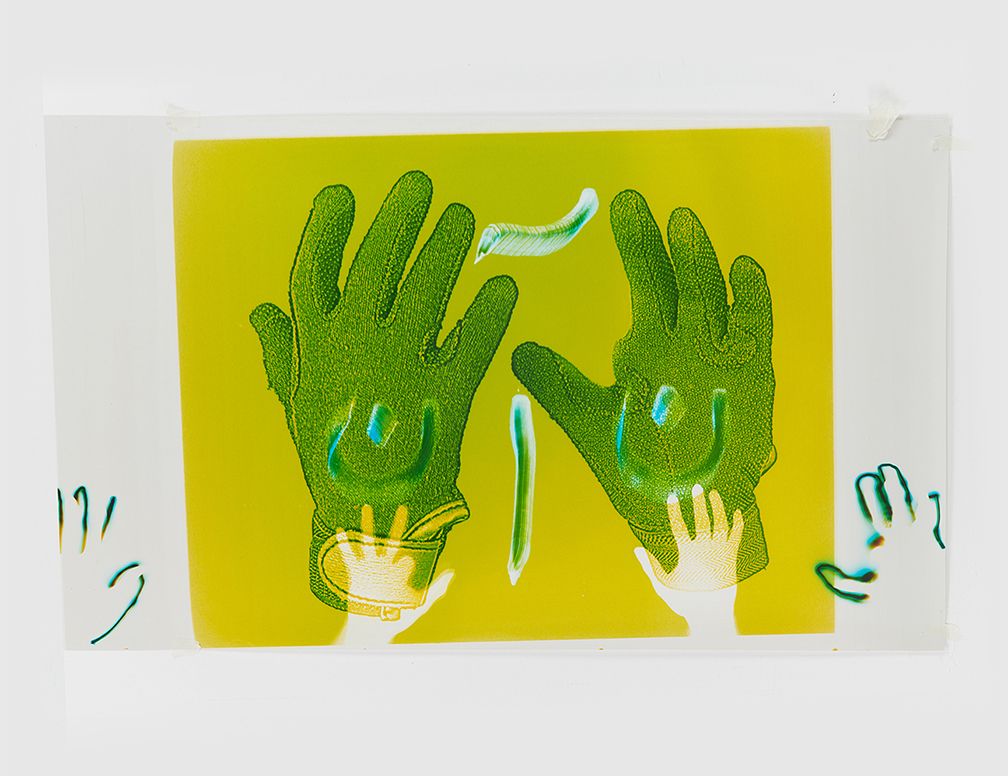Simone Subal Gallery is pleased to present Not for everybody, a group exhibition featuring the work of Hadi Fallahpisheh, Baseera Khan, and Gloria Maximo, three artists based in New York whose work addresses themes of legibility, adaptation, and transience. Each artist works across several disciplines—photography, performance, and installation, among them—responding to conditions of public neglect and policing in the United States. The process of adapting—or refusing to adapt—to a society whose messages and policies are increasingly unaccommodating, is evinced materially, linguistically, and kinetically throughout the exhibition. While often placing their bodies before the camera, they make work through acts of obscurity, agitation, and abstraction, many times as a means of sheltering the self.
Hadi Fallahpisheh, who hails from Tehran, contributes new work from a series entitled The Truth Has Four Legs, a part diaristic, part fictional project, about a year he spent alone in 2017 in a remote town in Upstate, NY. Through a process of cameraless photography made in his garage darkroom, the artist confronts reductive public perceptions about his identity, and a social climate informed by anti-immigrant policies. Tracing his encounters with found images, in the photographs, gestures of the artist’s own body and written inscriptions made with light, appear phantom-like on the page. A large handmade vase suspended from the ceiling nearby vocalizes anxieties of a collective subject through an audio track hidden within the vessel. Moving fluidly between languages including Farsi, Turkish, Arabic, Spanish, and English, as well as a sounding sheep, the vase echoes pleas for help as visitors approach.
Calls for protection also appear in Privacy Control, a new installation by Baseera Khan, which transmits paraphrased, feminist translations by the artist of the Four Quls, the prayers for protection which form the final chapters of the Quran, onto the wall of the gallery. Installed behind panes of two-way mirror, a material used to surveil and police, Khan adapts the material and prayer for her own devices, creating a protective shield which both envelops and deflects its surroundings. Related collages named after the prayers, layer scanned images from her personal archive among transparencies. Also presented for the first time is Planet Fitness (2016), a video of the artist running before a blank green screen in a NYC public park. Set to a soundtrack mixed by Khan including Sufi musician Nustrat Fateh Ali Khan, Robyn, and renowned Indian vocalist Lata Mangeshkar, Khan’s ritual of resilience speaks to her experiences of displacement within the United States, and to the projections others place onto her identity.
Tracing the movement of individuals within dominant social systems and institutions, concerns Gloria Maximo who uses abstraction to explore realist subjects in a new series entitled Upward Mobility. A video of the artist seated at a table on a sidewalk in New York portrays a woman working in the early morning, at a promotional table. An internal dialogue manifests underneath the table, a semi-private space where her hands gesture a repeating sequence of idiosyncratic movements that convey her exasperation, or pleading of a case. The barriers to gainful employment and resulting instability is shown in two paintings on plaster nearby. One entitled The Color of Cardboard, lies on the floor against the wall, in reference to a sheltering body; another in the form of the sidewalk, bows slightly like a back, resting in final repose on the very table where she worked.
Curated by Allie Tepper









































































































